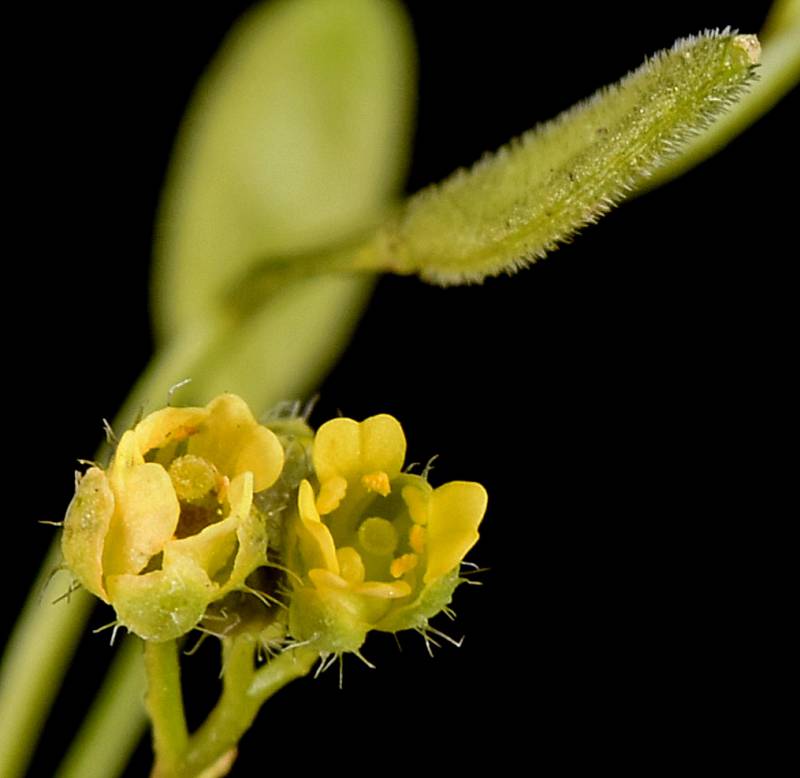Draba graminea
Draba nemorosa
woods draba, woodland whitlow-grass
Basal leaves often form rosettes, petioles ciliate, blades oblong or oblanceolate, 1-3.5 cm long and 5-15 mm broad, margins dentate to finely toothed or occasionally nearly entire; varying amounts of pubescence above and beneath with cruciform trichomes and stalked trichomes with 2-3 rays;
cauline leaves generally 4-12 but sometimes 15, sessile, ovate or oblong, margins as basal, pubescent above and beneath, trichomes above as basal leaves and beneath mostly simple trichomes combined with 2-3-rayed trichomes.
Inflorescence racemose, usually 18-60 flowered, ebracteate, significantly elongated in fruit;
rachis rigid and straight, fully glabrous;
pedicels spreading, straight, 2-7 times longer than fruit, glabrous;
sepals 4, ovate, 0.9-1.6 mm long, scarcely pubescent with simple trichomes;
petals 4, yellow, narrower towards base with deep notches, 1.7-2.2 mm long and 0.6-1 mm broad;
anthers 0.1-0.2 mm, broadly ovate to slightly reniform.
Silicles 5-8 mm long and 1.5-2.5 mm broad, oblong to elliptic or occasionally narrower toward base, plane, somewhat flattened;
valves glabrous or pubescent with simple trichomes;
ovaries generally containing 36-60 ovules;
seeds ovoid, 0.5-0.7 mm long and 0.3-0.4 mm broad.
Draba graminea
Draba nemorosa
- Local floras:
BC,
CA,
OR,
WA
- Local Web sites:
CalFlora,
CalPhotos,
Flora NW,
PNW Herbaria
WildflowerSearch
iNaturalist (observations)
USDA Plants Database
- LBJ Wildflower Center
- SEINet
- Plants of the World Online
- Encyclopedia of Life
- Wikipedia
- Google Image Search
